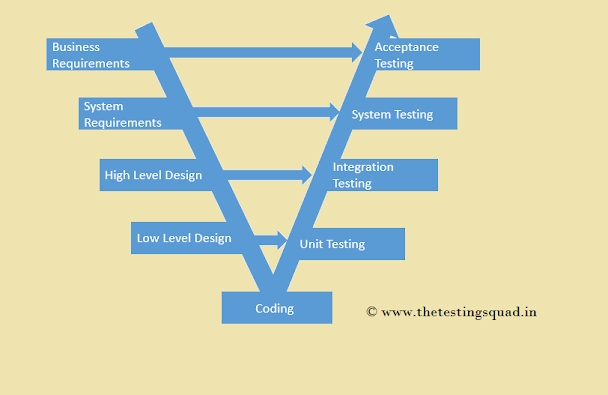What is V-model in SDLC?
The V-Model is a software development methodology that is used to guide the development process from the beginning to the end. The name "V-Model" comes from the shape of the process, which is represented by a V-shape. The left side of the V represents the development phases, and the right side represents the testing and validation phases.
Different Phases in V Model?
The testing and validation phases of the V-Model include:
Unit testing: This phase is used to test individual components of the system to ensure that they work as expected.
Integration testing: This phase is used to test the integrated system to ensure that all the components work together as expected.
System testing: This phase is used to test the entire system to ensure that it meets the user's requirements.
Acceptance testing: This phase is used to test the system with the end-users to ensure that it meets their needs and expectations.
The V-Model is a linear sequential model, meaning that each phase must be completed before moving on to the next one. This makes it a good choice for projects with well-defined requirements and a clear end goal. One of the main advantages of the V-Model is that it provides a clear and well-defined process for development and it ensures that the final product will meet the user's requirements.
Advantages and Disadvantages of the V Model?
Advantages of V-Model:
Clear and well-defined process: The V-Model provides a clear and well-defined process for development, which helps to ensure that the final product will meet the user's requirements.
Early detection of defects: The V-Model includes extensive testing and validation phases, which helps to detect defects early in the development process, reducing the overall cost and time needed to fix them.
Improved communication: The V-Model promotes clear communication and collaboration between different teams and stakeholders, which helps to ensure that everyone is on the same page and working towards the same goal.
Better quality assurance: The V-Model includes a thorough testing and validation process, which helps to ensure that the final product meets the user's requirements and is of high quality.
Disadvantages of V-Model:
Inflexible: The V-Model is a linear sequential model, which means that each phase must be completed before moving on to the next one. This can make it difficult to adjust to changes in requirements or unexpected issues that arise during the development process.
Time-consuming: The V-Model includes a lot of testing and validation phases, which can add a significant amount of time to the overall development process.
Costly: If defects are found during the testing and validation phases, it can be costly and time-consuming to go back and fix them.
Not suitable for projects with constantly changing requirements: The V-Model is not suitable for projects with constantly changing requirements, as it can be difficult to adjust to changes in requirements or unexpected issues that arise during the development process.
In summary, The V-Model is a linear sequential software development model that provides a clear and well-defined process for development, however, it can be inflexible, time-consuming and costly if requirements change during the development process. It is best suited for projects with well-defined requirements and a clear end goal.


Post a Comment